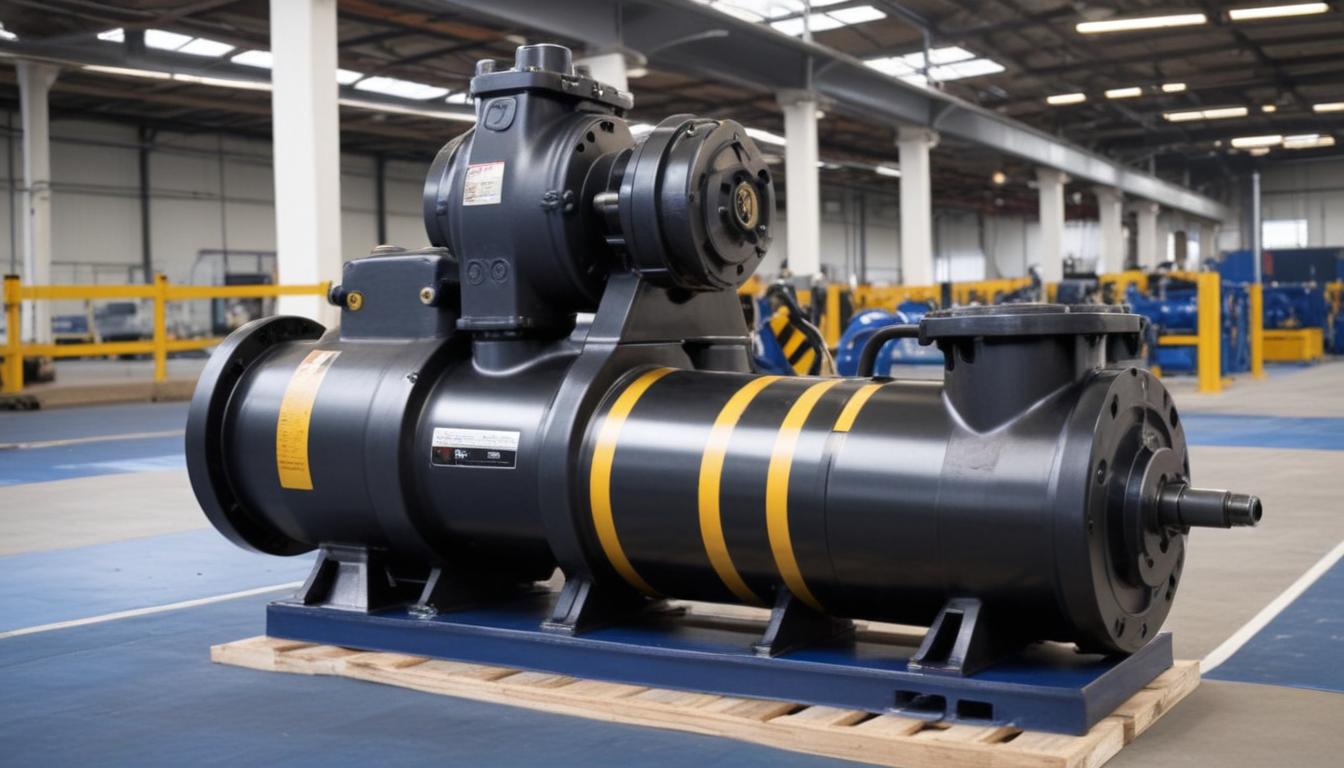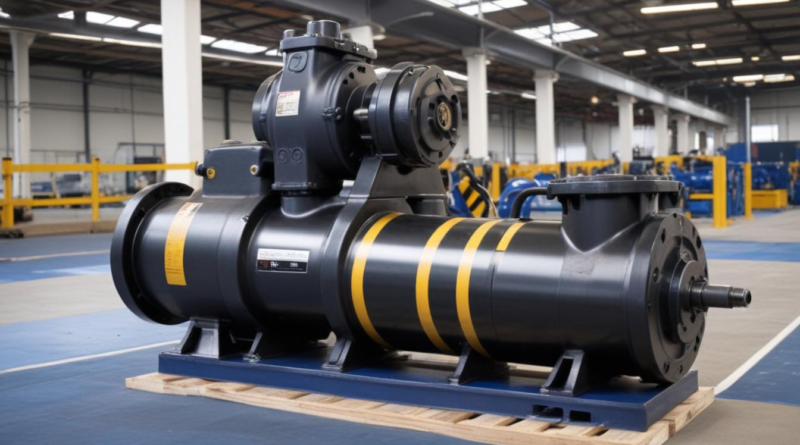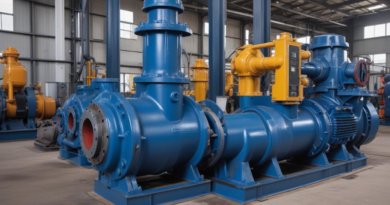the impact of pump speed on performance
Pump speed refers to the rotational velocity of a pump’s impeller, typically measured in revolutions per minute (RPM). It is a fundamental parameter that directly influences a pump’s performance and efficiency. Understanding the fundamentals of pump speed is essential for optimizing pump operations and ensuring that systems function effectively under varying conditions.
Several key factors are affected by pump speed:
- Flow Rate: The volume of fluid moved per unit of time increases with pump speed.
- Head: The height to which a pump can raise water increases with the square of the pump speed.
- Power Consumption: The energy required by the pump grows with the cube of the pump speed.
These relationships are encapsulated in the pump affinity laws, which provide a mathematical foundation for predicting changes in pump performance based on speed adjustments. The affinity laws are outlined below:
- Flow Rate (Q): ( Q propto N )
- Head (H): ( H propto N^2 )
- Power (P): ( P propto N^3 )
| Parameter | Relationship with Pump Speed |
|---|---|
| Flow Rate (Q) | Directly proportional to pump speed |
| Head (H) | Proportional to the square of pump speed |
| Power (P) | Proportional to the cube of pump speed |
By manipulating pump speed, operators can tailor the pump’s performance to meet specific system demands, thereby enhancing overall efficiency and reducing energy consumption. However, it is crucial to consider the implications of speed changes on other performance aspects to maintain system balance and longevity.
impact on flow rate
Adjusting the pump speed directly influences the flow rate, which is a fundamental aspect of pump performance. According to the affinity laws, the flow rate (( Q )) is directly proportional to the pump speed (( N )). This linear relationship allows for predictable adjustments in fluid movement based on speed changes. For example, increasing the pump speed by 20% will result in a corresponding 20% increase in flow rate, assuming system conditions remain constant.
Several factors contribute to this relationship:
- Impeller Design: The geometry and size of the impeller determine how efficiently fluid is moved at different speeds.
- System Resistance: The overall resistance in the piping system can amplify or mitigate the effects of speed changes on flow rate.
- Fluid Characteristics: Properties such as viscosity and density influence how flow rate responds to speed adjustments.
To illustrate the impact of pump speed on flow rate, consider the following table:
| Pump Speed (RPM) | Flow Rate (GPM) |
|---|---|
| 1000 | 500 |
| 1200 | 600 |
| 1500 | 750 |
In applications where varying flow rates are required, such as in HVAC systems or water treatment facilities, the ability to adjust pump speed provides significant flexibility. Utilizing variable frequency drives (VFDs) allows for precise control over pump speed, enabling operators to fine-tune the flow rate to match real-time demand. This not only enhances efficiency but also extends the lifespan of the pump by reducing unnecessary mechanical stress.
Moreover, optimizing pump speed to achieve the desired flow rate can lead to substantial energy savings. By operating the pump at the most efficient speed for the current demand, energy consumption is minimized, contributing to lower operational costs and a reduced environmental footprint. However, it is essential to balance speed adjustments with other performance factors to maintain overall system stability and prevent issues such as turbulence or cavitation.
In summary, understanding and managing the relationship between pump speed and flow rate is critical for optimizing pump performance and achieving desired operational outcomes.
energy efficiency considerations
Adjusting the rotational velocity of a pump significantly influences its energy efficiency. As pump speed increases, the energy consumption rises exponentially due to the cubic relationship between pump speed and power usage, as outlined by the affinity laws. This relationship underscores the importance of optimizing pump speed to achieve desired performance while minimizing energy costs.
Key Considerations for Energy Efficiency:
- Variable Frequency Drives (VFDs): Implementing VFDs allows for precise control of pump speed, enabling adjustments based on real-time demand. This adaptability ensures that pumps operate only at the necessary speed, reducing unnecessary energy consumption.
- System Demand Matching: Aligning pump speed with the actual system requirements prevents over-pumping, which can lead to energy waste. Understanding the specific needs of the system helps in setting optimal speed levels.
- Load Variations: Pumps often face fluctuating loads. By dynamically adjusting pump speed to match these variations, energy efficiency can be maintained without compromising performance.
- Maintenance Practices: Regular maintenance ensures that pumps operate efficiently. Components such as impellers and seals should be kept in good condition to avoid energy losses caused by wear and tear.
The following table illustrates the impact of pump speed on energy consumption:
| Pump Speed (RPM) | Power Consumption (kW) | Energy Efficiency (%) |
|---|---|---|
| 1000 | 10 | 75 |
| 1200 | 17 | 68 |
| 1500 | 33.75 | 60 |
Strategies to Enhance Energy Efficiency:
- Implementing VFDs: As mentioned, VFDs are crucial for adjusting pump speed dynamically, ensuring energy is used efficiently based on current demands.
- Conducting Energy Audits: Regular energy audits help identify inefficiencies in pump operations, allowing for informed decisions on speed adjustments and system upgrades.
- Optimizing Pump Selection: Choosing pumps that are appropriately sized and designed for specific applications can reduce the need for excessive speed adjustments, thereby enhancing overall efficiency.
- Integrating Automation Systems: Automated control systems can monitor and adjust pump speed in real-time, maintaining optimal performance and energy use without manual intervention.
By carefully managing pump speed, organizations can achieve significant energy savings while maintaining or even improving pump performance. Balancing speed adjustments with system requirements and implementing advanced control technologies are essential steps toward enhancing overall efficiency and reducing operational costs.
effects on wear and tear
 Operating pumps at varying speeds can significantly influence the rate at which components experience wear and tear. Higher rotational velocities amplify mechanical stresses, leading to accelerated degradation of critical parts. This increased stress stems from factors such as heightened friction, elevated temperatures, and greater vibrational forces, all of which contribute to the overall mechanical fatigue of pump components.
Operating pumps at varying speeds can significantly influence the rate at which components experience wear and tear. Higher rotational velocities amplify mechanical stresses, leading to accelerated degradation of critical parts. This increased stress stems from factors such as heightened friction, elevated temperatures, and greater vibrational forces, all of which contribute to the overall mechanical fatigue of pump components.
Several components are particularly susceptible to increased wear due to elevated pump speeds:
- Bearings: Higher speeds generate more friction, resulting in increased bearing wear and reducing their operational lifespan.
- Seals: Enhanced rotational speeds can cause faster wear of seals, leading to potential leakage and requiring more frequent maintenance.
- Impellers: The impeller blades are subjected to greater centrifugal forces at higher speeds, which can cause material fatigue and erosion over time.
- Shafts: Increased vibration and centrifugal forces can lead to shaft misalignment and eventual failure if not properly managed.
The relationship between pump speed and component wear can be illustrated in the following table:
| Pump Speed (RPM) | Bearing Wear Rate (mm/year) | Seal Lifespan (hours) | Impeller Fatigue (cycles) |
|---|---|---|---|
| 1000 | 0.5 | 2000 | 10,000 |
| 1200 | 0.7 | 1500 | 8,000 |
| 1500 | 1.2 | 1000 | 5,000 |
As demonstrated, increasing pump speed from 1000 RPM to 1500 RPM results in a marked escalation in wear rates and a reduction in component lifespans. These changes necessitate more frequent maintenance and component replacements, which can impact the overall performance and efficiency of the pumping system.
Additionally, elevated pump speeds can lead to thermal stress due to increased frictional heating. Consistently operating at high speeds may cause temperature rises that exceed the tolerance levels of materials, leading to deformation or failure. Furthermore, excessive vibration induced by high-speed operations can compromise the structural integrity of the pump housing and connected piping, potentially resulting in costly repairs and downtime.
Implementing proper lubrication and cooling systems becomes critical when operating pumps at higher speeds to mitigate some of these adverse effects. Regular monitoring of component conditions can aid in early detection of wear-related issues, allowing for timely interventions before significant failures occur.
Ultimately, balancing pump speed to optimize performance and efficiency while minimizing wear and tear is essential for maintaining reliable and cost-effective pump operations.
optimization strategies
Optimizing pump speed is crucial for enhancing both performance and efficiency in various pumping applications. Effective optimization strategies involve a combination of technological solutions, regular maintenance practices, and system design considerations to ensure that pump operations are aligned with the specific demands of the application. Below are key strategies to achieve optimal pump speed settings:
- Variable Frequency Drives (VFDs): Implementing VFDs allows for precise control of pump speed based on real-time demand. By adjusting the frequency of the electrical power supplied to the pump, VFDs enable smooth and efficient speed modulation, reducing energy consumption and enhancing system responsiveness.
- Flow Monitoring and Control Systems: Integrating advanced flow monitoring systems provides continuous data on system performance. Automated control systems can adjust pump speed dynamically to maintain desired flow rates, ensuring optimal performance while minimizing energy usage.
- Proper Pump Sizing: Selecting the right pump size for the specific application prevents the need for excessive speed adjustments. Properly sized pumps operate closer to their best efficiency points (BEP), reducing energy consumption and mechanical stress.
- Regular Maintenance: Routine maintenance, including the inspection and replacement of worn components, ensures that pumps operate efficiently. Clean and well-maintained impellers, seals, and bearings contribute to smoother operation and allow for more effective speed optimization.
- System Design Optimization: Designing the piping system with minimal resistance and appropriate sizing can enhance pump efficiency. Reducing friction losses and avoiding unnecessary bends or fittings decrease the load on the pump, allowing for lower speed settings without compromising performance.
- Advanced Control Algorithms: Utilizing sophisticated control algorithms can optimize pump speed in response to fluctuating demands. These algorithms analyze real-time data to predict and adjust pump operations proactively, ensuring sustained efficiency and reliability.
The implementation of these strategies can be illustrated in the following table, highlighting their impact on pump speed optimization:
| Strategy | Impact on Pump Speed Optimization | Benefits |
|---|---|---|
| Variable Frequency Drives (VFDs) | Enables precise speed control based on demand | Energy savings, improved efficiency, reduced wear |
| Flow Monitoring Systems | Provides real-time performance data | Optimal speed adjustments, enhanced performance |
| Proper Pump Sizing | Ensures pumps operate near BEP | Increased efficiency, lower energy costs |
| Regular Maintenance | Maintains optimal pump condition | Longer pump lifespan, consistent performance |
| System Design Optimization | Reduces system resistance and friction losses | Lower speed requirements, enhanced efficiency |
| Advanced Control Algorithms | Automates speed adjustments based on predictive analysis | Improved responsiveness, sustained performance |
Implementing Integrated Control Systems: Combining multiple optimization strategies through integrated control systems can yield significant improvements in pump operations. These systems can coordinate VFDs, flow monitors, and maintenance schedules to create a cohesive approach to pump speed optimization. For instance, an integrated system can automatically adjust pump speed during peak and off-peak hours, ensuring that energy consumption is minimized when demand is low and ample performance is maintained during high-demand periods.
Predictive Maintenance: Leveraging data analytics and machine learning for predictive maintenance can further enhance pump speed optimization. By analyzing operational data, these technologies can predict potential failures and performance degradations before they occur. This proactive approach allows for timely adjustments to pump speed and maintenance schedules, ensuring continuous efficiency and reducing unexpected downtime.
Energy Audits and Performance Monitoring: Conducting regular energy audits and continuous performance monitoring helps identify areas where pump speed optimization can be improved. Detailed analysis of energy consumption patterns and pump performance metrics provides insights into the effectiveness of current strategies and highlights opportunities for further enhancements.
Training and Personnel Development: Ensuring that personnel are knowledgeable about pump speed optimization techniques and the latest technologies is essential for maintaining optimal pump operations. Regular training programs can equip staff with the skills needed to implement and manage optimization strategies effectively, contributing to sustained performance and efficiency.
By adopting a comprehensive approach to pump speed optimization, organizations can achieve significant improvements in system performance and efficiency, leading to reduced operational costs and enhanced reliability.



